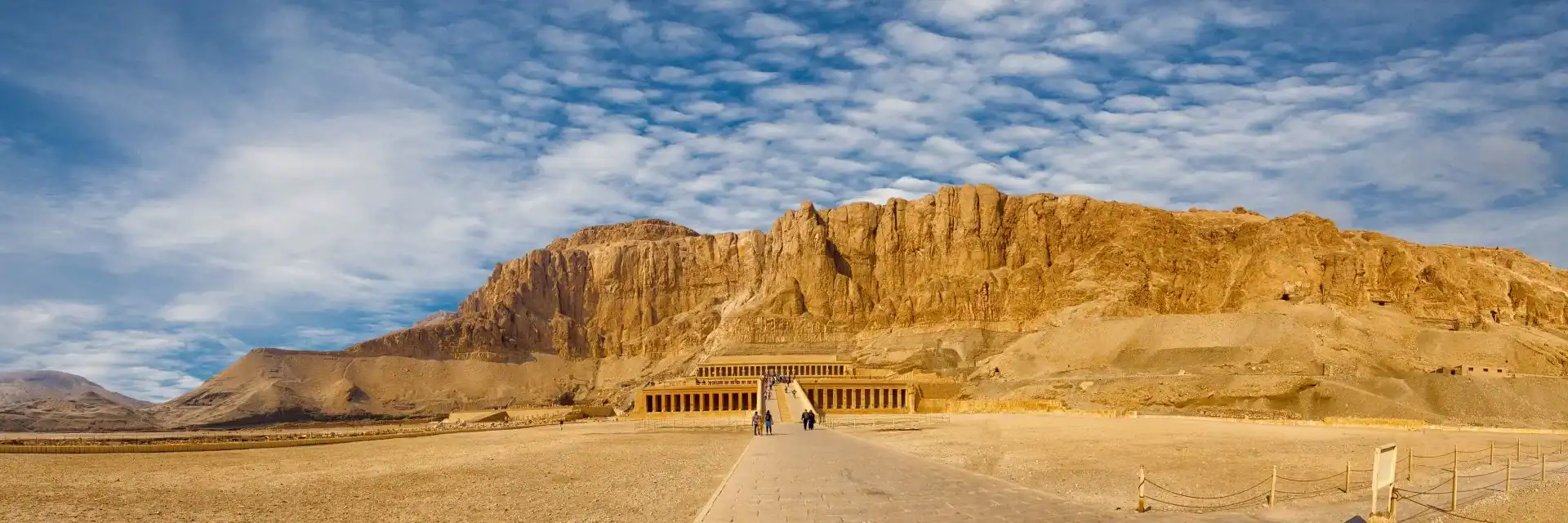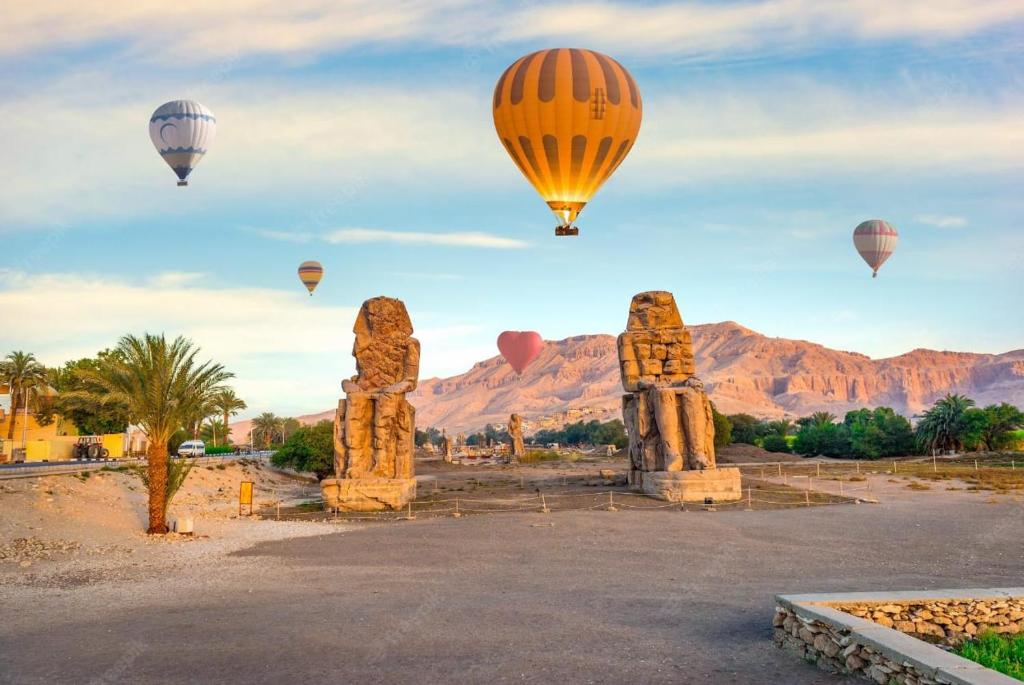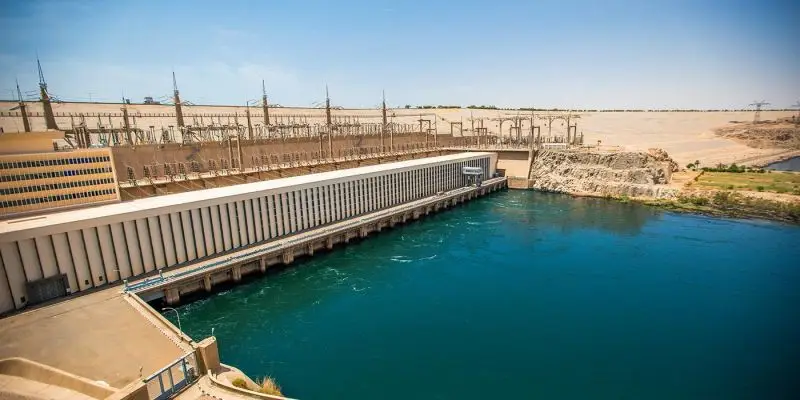The Temple of Queen Hatshepsut, also known as Djeser-Djeseru (“Holy of Holies”), is an architectural masterpiece on the west bank of the Nile, beneath the towering cliffs of Deir El-Bahari. It stands as a testament to the creativity, elegance, and power of ancient Egyptian civilization.
Table of Contents
The History of Hatshepsut Temple
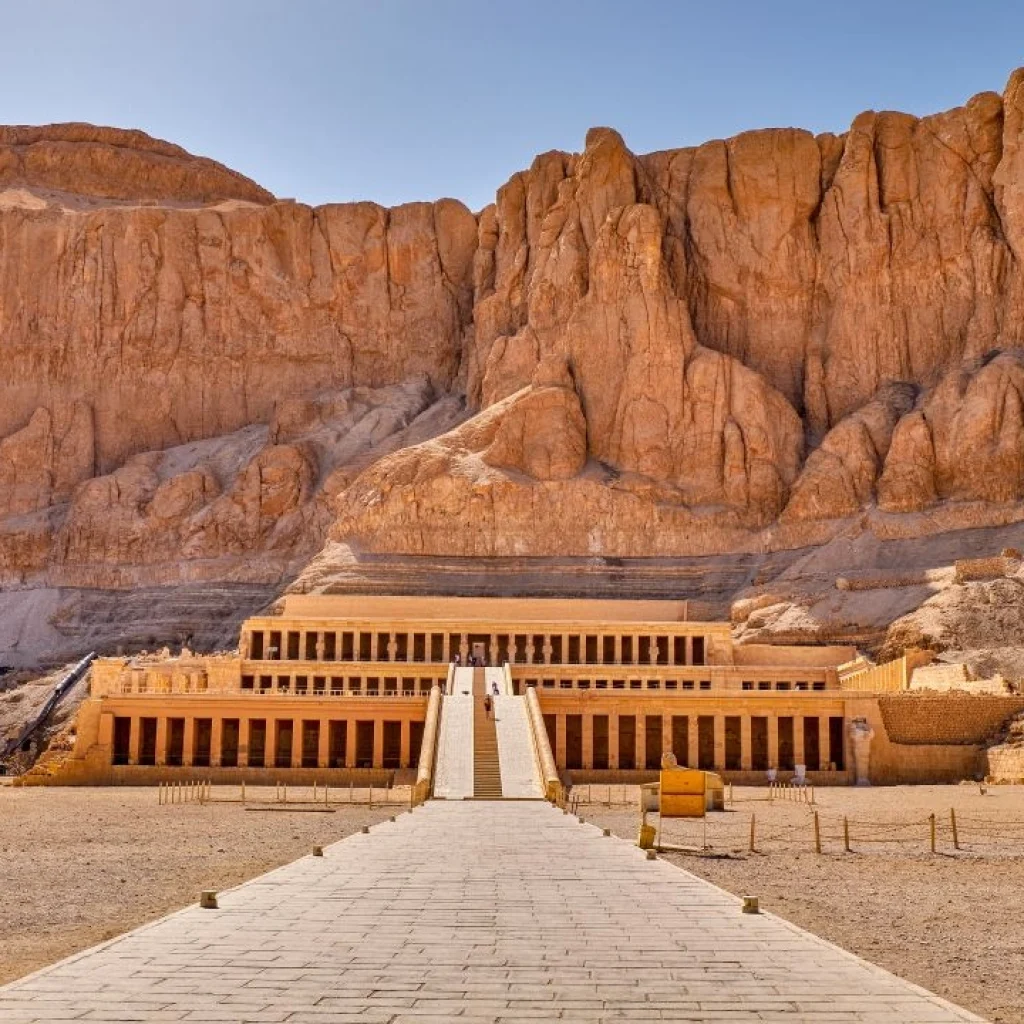
Constructed during the 18th dynasty of the New Kingdom, the temple was designed as a mortuary complex to honor Queen Hatshepsut and the god Amun.
- Inspiration: The neighboring Mortuary Temple of Mentuhotep II served as its model.
- Purpose: Beyond its mortuary role, the temple immortalized Hatshepsut’s legacy, with its design and inscriptions celebrating her divine and earthly achievements.
- Significance: The temple showcases Hatshepsut’s ambition to align herself with the gods and secure her place in history.
Who Was Queen Hatshepsut?
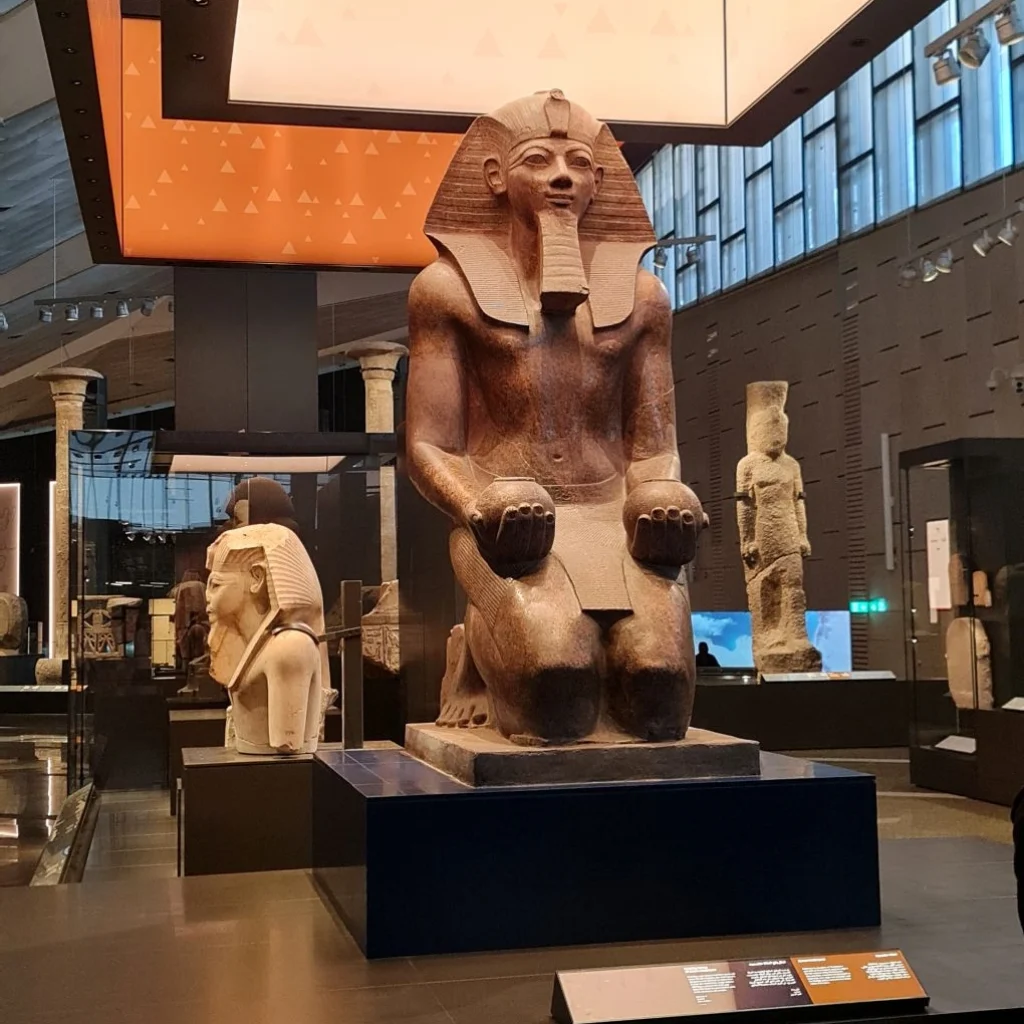
Queen Hatshepsut (1479–1458 BCE) was one of the most powerful and influential female rulers in Egyptian history.
- Rise to Power: Initially serving as regent for her stepson Thutmose III, she later declared herself Pharaoh.
- Achievements: Her reign was marked by peace and prosperity, including successful trade expeditions to Punt, architectural advancements, and the expansion of the Karnak Temple.
- Legacy: Known as the “Wife of God Amun,” Hatshepsut secured her place as a legendary figure in Egypt’s history.
Who Designed the Temple of Hatshepsut?
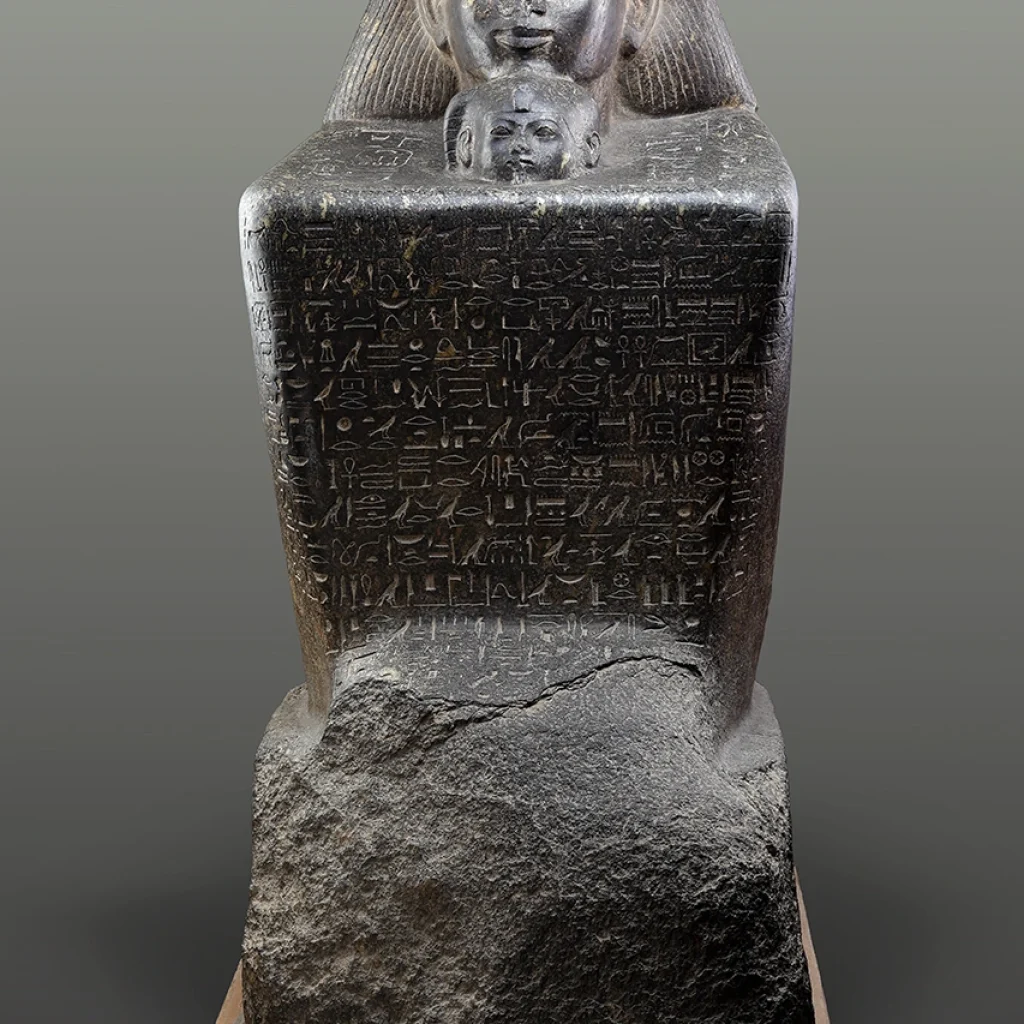
Hatshepsut’s trusted chancellor and architect, Senenmut, masterminded the temple’s design.
- Timeline: Construction began around 1479 BCE and took 15 years to complete.
- Unique Style: The temple is an early example of classical architecture, blending monumental geometry with active worship spaces for gods tied to Hatshepsut’s afterlife.
- Location: Situated about 17 miles northwest of Luxor, it reflects the grandeur of the New Kingdom capital, Thebes.
The Architecture of Hatshepsut Temple
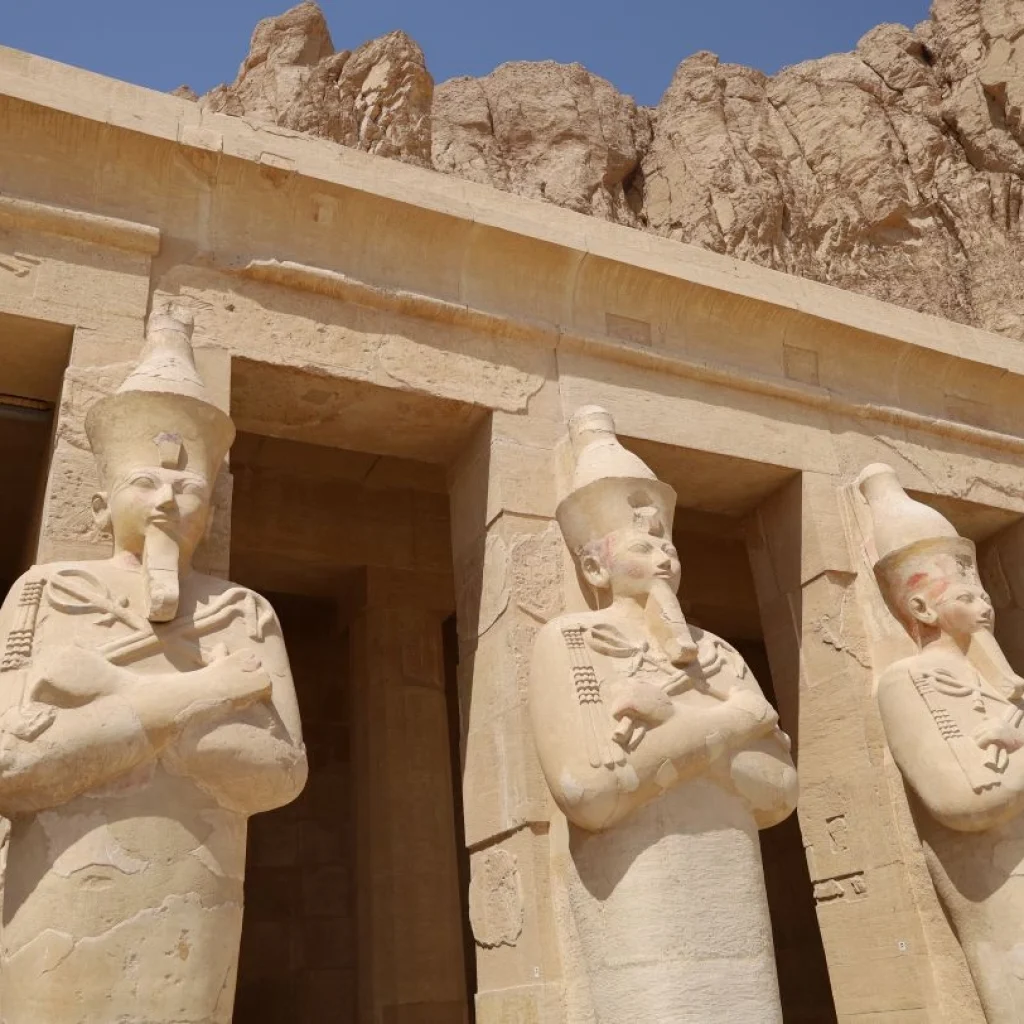
The temple’s design stands out for its harmony with the surrounding landscape and its intricate detailing.
- Three Terraces: The temple is divided into three ascending levels connected by ramps.
- Iconic Features:
- Statues of Osiris and an avenue of sphinxes.
- Colonnades with square pillars.
- The Chapel of Hathor with 12 columns and the Chapel of Anubis with fluted columns.
- The Sanctuary of Amun, a sacred space for worship.
- Carvings and Inscriptions: The walls document significant events such as Hatshepsut’s expedition to Punt and her divine relationship with Amun.
- Astronomical Alignment: Like Abu Simbel, the temple features an alignment that connects it with celestial phenomena.
Conclusion
The Temple of Queen Hatshepsut is a breathtaking marvel that represents the ingenuity, vision, and power of one of Egypt’s most remarkable rulers. As an architectural masterpiece, it seamlessly blends with its natural surroundings while showcasing intricate details that immortalize Hatshepsut’s divine and earthly achievements.
From its grand terraces and colonnades to the captivating wall carvings depicting expeditions and celestial alignments, every corner of the temple tells a story of ambition, devotion, and legacy. Queen Hatshepsut’s reign as a powerful and influential female Pharaoh is reflected in every aspect of this stunning structure.
Visiting the Temple of Queen Hatshepsut is not just a journey into ancient Egyptian history; it’s a chance to connect with the grandeur of a civilization that continues to inspire awe and wonder. This iconic site stands as a testament to the enduring legacy of one of Egypt’s greatest rulers and is an essential part of any exploration of the country’s majestic past.
Make sure to include this remarkable site in your journey and experience the timeless wonders of ancient Egypt for yourself.

